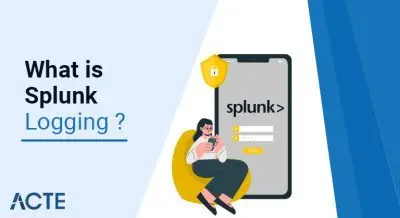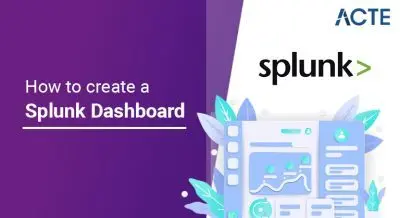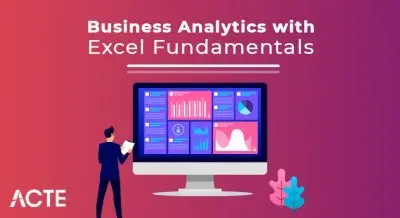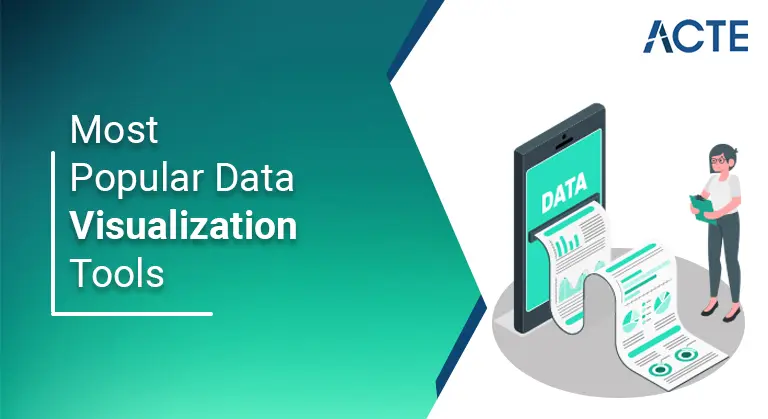
Data visualization is the graphical representation of information and data. By using visual elements like charts, graphs, and maps, data visualization tools provide an accessible way to see and understand trends, outliers, and patterns in data.
- Introduction To Data Visualization
- 15 top-notch Data Visualization tools
- Features Of Data Visualization
- Examples of Data Visualization
- Highlights of Data Visualization
- Why Data Visualization is important for any career?
- How does Data Visualization works
- The benefits of Data Visualization
- Conclusion
Introduction To Data Visualization:
Data Visualization is a process of visual representation of data in the form of location maps, charts, sparklines, infographics, temperature maps, or mathematical graphs.
Data presented with the material is easy to understand and analyze, allowing for the effective release of tangible data from the data. Qualified participants can then use the findings to make real-time decisions that work best.
Data recognition tools, which include streaming data support, AI integration, embedding, collaboration, collaborative testing, and self-help capabilities, help visually represent data.
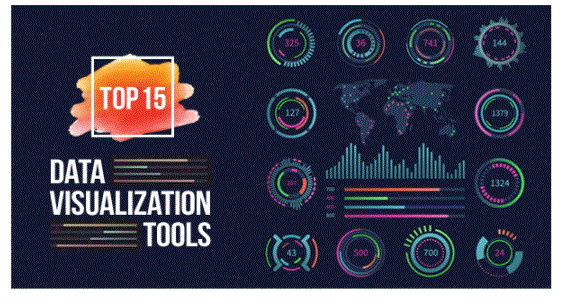
- Excellent visual skills
- Easy to use
- High class performance
- Supports interaction with various data sources
- Mobile Responds
- It has an informed society
- Special flexibility
- Large variety of data sources and charts
- A comprehensive list of built-in features for extracting, displaying, and editing data
- Fast prototyping
- Attractive results in appearance
- Facilitates easy sharing of data
- Easy creation and editing of report.
- Includes useful functions such as email editing and report sharing.
- Plenty of data space.
- Ask for customer support.
- User-friendly forum
- It is easy to combine data
- Attractive data graphs
- Compatibility with Google products.
- High-quality exit quality
- It is easy to produce excellent graphics
- Lots of networking opportunities
- Simple visual connector
- Very fast visual response
- Provides a high level of platform for editing, storing and reading user data
- Easy-to-use map feature
- Excellent readability of visual images
- Excellent measurement option
- NLP skills
- Provides access from multiple devices
- Predictability statistics
- Self-help dashboards
- It is ideal for necessary purpose comes that embody giant databases.
- Reliable visual instrumentality.
- High quality client support.
- Rapid development.
- Seamless customization flexibility.
- Allows online charts for charts.
- High-quality image posting.
- Very interactive interface.
- Server hosting helps to share simply.
- It doesn’t have to be compelled to be enclosed within the chart creation.
- Suitable for beginners.
- It’s liberated to use.
- Modern customization choices
- Attractive pictures in look
- Multiple chart structures
- Simple and versatile
- Designed for specific uses
- Outstanding facilitate desktop support
- Active community
- No special technical support is needed
- Easily integrates with existing applications
- Personal, made dashboard
- High level of security
- There aren’t any speed or memory barriers
- Compatible with Microsoft product
- Easy-to-use visual interface
- An attractive, colorful look
- Problem-free fixes
- The least high-ticket resolution
15 top-notch Data Visualization tools:
1. Table
One of the most widely used data viewing tools, Tableau, provides collaborative display solutions to more than 57,000 companies. Provides a high-quality integration of information, including Teradata, SAP, My SQL, Amazon AWS, and Hadoop, Tableau successfully creates visuals and images from large, flexible and frequently used artificial intelligence, machine learning, and programs Big Data applications.
Tablet Benefits:
2. Dundas BI
Dundas BI provides customizable Data Visualization with interactive scorecards, maps, gears, and charts, enhancing ad-hoc creation, multi-page reports. By giving users full control over visual effects, Dundas BI performs the complex task of cleaning, testing, converting, and modeling large databases.
Best of Dundas BI:
3. JupyteR
The web-based app, JupyteR, is one of the most comprehensive data recognition tools that allows users to create and share documents that contain visuals, statistics, text, and live code. JupyteR is perfect for data processing and conversion, mathematical modeling, number simulation, computer interaction, and machine learning.
Benefits of JupyteR:
4. Zoho Reports
Zoho Reports, also known as Zoho Analytics, is a comprehensive data viewing tool that integrates Business Intelligence and online reporting services, allowing faster creation and more comprehensive report sharing in minutes. The advanced viewing tool also supports Big Data Import from major websites and applications.
The beauty of Zoho Reports:
5. Google Charts
One of the biggest players in the Data Visualization space market, Google Charts, encoded in SVG and HTML5, is famous for its ability to generate visual and image data. Google Charts provides zoom performance and provides users with unparalleled cross-platform interaction with iOS, Android, and earlier versions of the Internet Explorer browser.
The beauty of Google Charts:
6. Visual.ly
Visual.ly is one of the market data detection tools, known for its impressive distribution network that reflects project results. Employed by a dedicated team of Data Visualization creators, Visual.ly directs the process of importing and exporting data, even to third parties.
The beauty of Visual.ly:
7. GREEN
RAW, better known as RawGraphs, works with limited data such as a TSV file or a CSV file. It acts as a link between data recognition and spreadsheets. Including unusual and unusual formats, RawGraphs provides solid data security even though it is a web-based application.
Benefits of RAW:
8. IBM Watson
Designed by IBM founder Thomas J. Watson, this state-of-the-art data display tool utilizes analytical and practical components to extract data and patterns from both informal and structured data. Leveraging NLP (Natural Language Processing), IBM Watson’s self-help, self-help tool guides users throughout the acquisition process.
Benefits of IBM Watson:
9. Sense
Considered one amongst the oldest knowledge recognition tools, Sisense provides users access to instant knowledge anyplace, anytime. The simplest viewing tool of this class will determine key knowledge patterns and summarize statistics to assist call manufacturers build knowledge driven selections.
Sisense Benefits:
10. Itulo
An open supply knowledge viewing tool, Plotly offers full integration with analytics-focused programming languages such as Matlab, Python, and R, enabling advanced visualization. widely used for sharing, distributing, editing, creating, and sharing active, graphic knowledge, Plotly supports each cloud reading and cloud reading.
Pros Benefits:
11. knowledge threshold
Data Wrapper is one amongst the few tools to look at free market knowledge. it’s in style among media corporations due to its inherent ability to make fast charts and give image statistics in massive amounts of knowledge. that includes an easy and correct visual interface, knowledge Wrapper permits users to make maps and charts that they will simply enter in reports.
Benefits of knowledge Wrapper:
12. Highcharts
Used by 72 hundred corporations worldwide, the Highcharts tool is good for live streaming large-scale knowledge. exploiting the Javascript API and providing integration with jQuery, Highcharts provides browsing performance support that has quick access to interactive viewing.
Benefits of Highcharts:
13. Fusioncharts
Fusioncharts is one amongst the foremost well-known and widely accepted knowledge recognition tools. Javascript-based, a complicated viewing tool offers ninety completely different charts for building charts that embody giant frames and platforms, giving users vital flexibility.
Benefits of Fusioncharts:
14. Power BI
Power BI, Microsoft’s easy-to-use knowledge show tool, is obtainable for each installation and readying on cloud infrastructure. Power Bi is one amongst the whole knowledge recognition tools that supports a large variety of background data, as well as Teradata, Salesforce, PostgreSQL, Oracle, Google Analytics, Github, Adobe Analytics, Azure, -SQL Server, and Excel. A business-level tool creates wonderful visuals and brings period data for fast decision-making.
Energy Bi Benefits:
15. QlikView
A major player within the knowledge viewing market, Qlikview provides solutions to over forty,000 customers in one hundred countries. Qlikview’s knowledge capture tool, while not the trouble of dashing, customizable visibility, conjointly includes solid options, as well as statistics, business coverage, and Business Intelligence capabilities.
QlikView Benefits:
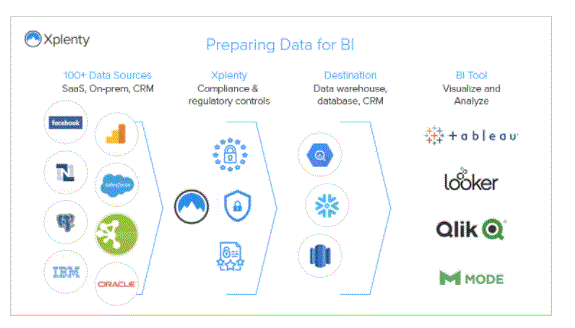
Features Of Data Visualization:
1. Embedding: Big data is used to drive real business data. That information should be incorporated into effective business plans to better guide users to what happened, why, what will happen and what steps they can take to change that outcome, said David Marko, executive director of on-demand analytics. solutions and information management at Acumen Solutions Inc., IT consultancy.
2. Performance: Viewing tools should bring real value with useful guesses and instructions. “Viewing itself provides insight, but when combined with performance or written features it makes it work faster, and these tools enhance the role of end users by making them more responsible,” Abhyankar said. Factors that support efficiency include trend line support, click metrics and advanced math function flow.
3. Performance: If large data monitoring tools disrupt employees in the course of their work, they are less likely to be used. A few seconds delay may not be significant in some usage situations but may discourage users who have been assigned the task of testing hundreds of decisions throughout the day. Features that help improve performance include information, data development settings and powerful upload options.
4. Powerful Infrastructure: Serverless Computing is an emerging paradise for providing apps as fully coded with cloud services. Developers can focus on the concept of code, while leaving a heavy lifeline for the cloud provider that can access large business data with pre-programmed integration. “Business customers who save time, headaches and money unnecessarily manage their big data infrastructure with their BI work,” said Nick Mihailovski, product manager for Data Studio at Google Cloud. Non-server tools also increase the efficiency of large data analytics projects that may often undermine BI infrastructure.
5. Collaborative testing: Data analysis features facilitate the ability of analysts who analyze large data sets to quickly scan the space to visualize their data and validate their ideas. Ideally, this test site should be easy to use, easily accessible and seamlessly integrated into the BI function of the analyst. Ad hoc analysis features require support for different types of interactive viewing and analysis. This includes filtering, cutting and dialing, and drilling speed and speed making it possible for users to scan large volumes of data and get answers to their questions quickly, says Pratik Jain, a technical analyst at Kyvos Insights, BI. software provider.
6. Collaboration: The power of real-time collaboration on big Data Visualization tools allows employees to have meaningful conversations about their findings. This includes employees’ ability to interact in real-time with current data, rather than having to send static files and screenshots to each other.
7. Broadcast data support: Businesses are now dealing with complex, disputed data disputes from a variety of sources. Many viewing tools use asset conclusions based on the analysis of structured bulk data. This makes it difficult to analyze excess data in real-time. Data streaming support can allow multiple applications to visualize data from social media, the internet for device devices, and mobile applications.
8. Integration AI: Big Data Visualization tools begin experimenting with machine learning, in-depth learning, and natural language processing to facilitate analysis, evaluation, prediction, and interpretation of actions. Acumen’s Mark said, “Some players try to build partnerships with more companies to do this, but that is often a weak combination that slows down the process and confuses users. The tools that can find ways to deliver this under one skin are these.
9. Integrated metadata management: Metadata management comes with a business viewing tool to improve both data usability and accuracy of assistant analysis. Data pools, by design, are aimed at reducing data-driven time or, in other words, shortening and simplifying the data entry process.
Examples of Data Visualization:
Of course, one of the simplest ways to know information perception is to visualize it. What a crazy idea! With public information viewing galleries and information everyplace on-line, it is often superb to grasp wherever to start out. We’ve compiled ten glorious samples of uncomparable information shows, with examples showing historical victories, analyzing motion-picture show recordings, revealing hidden causes of death, and more. Tableau’s own public gallery displays dozens of visuals created with the free Tableau Public tool, as well as custom business dashboards as usable templates, and Viz of the Day collects a number of the simplest public creations. Also, there are heaps of nice blogs and books on information shows that contain glorious examples, explanations, and knowledge concerning best practices.
Highlights of Data Visualization:
Visuals are more accurate than text alone – Text is more difficult to compete with visuals. This is evident when it comes to delivering any communication that is intended to be easily digested, such as a top-down summary or report. We work hard to detect emotional symptoms within the visual. Images, diagrams, shapes, and colors can be translated quickly, which is why data recognition is so effective.
Data viewing is a type of language based on visual metaphors – Charts and maps are visual metaphors. They are tangible objects that represent concepts that involve human activity and natural phenomena. These visual metaphors affect our perception – or the way we receive information in our system.
Well-displayed data leads to information and knowledge – There is a value system that we work on and it starts with data. When you process data, analyze it, and visualize it, you add value to it. That data is now valuable because it has been converted into information. Once that information has been used (accepted, understood, remembered, and accessible) it becomes information.
Why Data Visualization is important for any career?
It’s hard to imagine a profitable technology industry making data more vivid. Every STEM field benefits from understanding data — as well as government fields, finance, marketing, history, consumer goods, service industries, education, sports, and so on. While we will always wax poetically about data visibility (on the Tableau website, after all) there are realistic, realistic apps that are undeniable. Also, since visual acuity is very common, it is one of the most useful professional skills you should develop. If you can better convey your points by looking at them, either in the dashboard or slide deck, you can make better use of that information.
The scientific concept of citizen data is growing. The skill sets change to adapt to the data-driven world. It is increasingly important for professionals to be able to use data to make decisions and use visuals to tell stories where data informs who, what, when, where, how. Although traditional education often paints a distinctive line between art storytelling and technical analysis, the modern world is professional and appreciates those who can cross between the two: data visibility remains the center of visual analysis and visual storytelling.
How does Data Visualization works:
Not ciao agone, the power to make intelligent information visibility, or dataviz, was a good talent to possess. For the foremost half, it’s benefited style and information managers WHO have deliberately determined to speculate in its acquisition. That has been modified. currently communication could be a must-have for all managers, as a result of typically, it’s the sole thanks to be of the work they’re doing.
Data is the main force behind this modification. Decision-making is more and more obsessed with information that helps the U.S. at such a high speed, and at such a volume, that we tend to not be aware of it while not having a selected output, kind of like the visible one. A typical example: At Boeing fishhawk system managers got to improve the potency of departure and landing of craft. however whenever a fish hawk moves up or down, his senses manufacture a T of knowledge. Departure and 10 settlements generate plenty of knowledge as held within the Library of Congress. while not visualizing it, finding hidden flaws within the patterns associate degreed confusion of that information would be an not possible catchword.
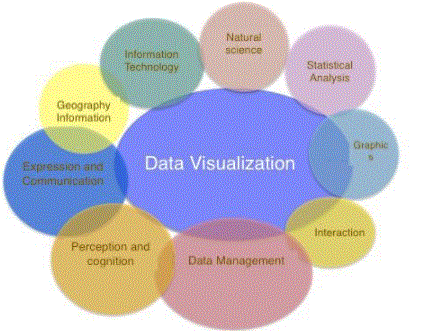
- Better analysis
- Quick action
- Identifying patterns
- Identifying errors
- Understanding the story
- Checking business details
- Capturing Recent Trends
The benefits of Data Visualization:
When considering business strategies and policies, data visibility benefits decision makers in a number of ways to improve data data. Let us consider seven major benefits:
Data viewing helps business participants analyze reports about sales, marketing strategies, and product interest. Based on the analysis, they can focus on areas that need attention in order to maximize profits, which makes the business more productive.
Quick action
As mentioned earlier, the human brain captures visual acuity more easily than table reports. Data viewing allows decision makers to be quickly informed of new data and take the necessary steps to grow a business.
Identifying patterns
A large amount of complex data can provide many opportunities for detail when we visualize it. Visualization allows business users to see the relationships between data, giving greater meaning to it. Examining these patterns helps users to focus on specific areas that need data attention, so that they can identify the value of those areas in order to further their business.
Identifying errors
Identifying your data helps to quickly identify any data errors. If data tends to suggest wrong actions, recognition helps to identify incorrect data quickly to be removed from analysis.
Understanding the story
Telling a story is the purpose of your dashboard. By designing your visual visuals effectively, you help the target audience to capture the story with just one look. Always make sure you convey the story in a simple way, without too complicated pictures.
Checking business details
In the current context of a competitive business environment, obtaining data correlations through visual representations is essential to identifying business information. Examining this information is important for business users or managers to set the right way to achieve business goals.
Capturing the latest trends
Through Data Visualization, you can find the latest trends in your business to provide quality products and diagnose problems before they arise. Staying on top of trends, you can put more effort into increasing the profitability of your business.
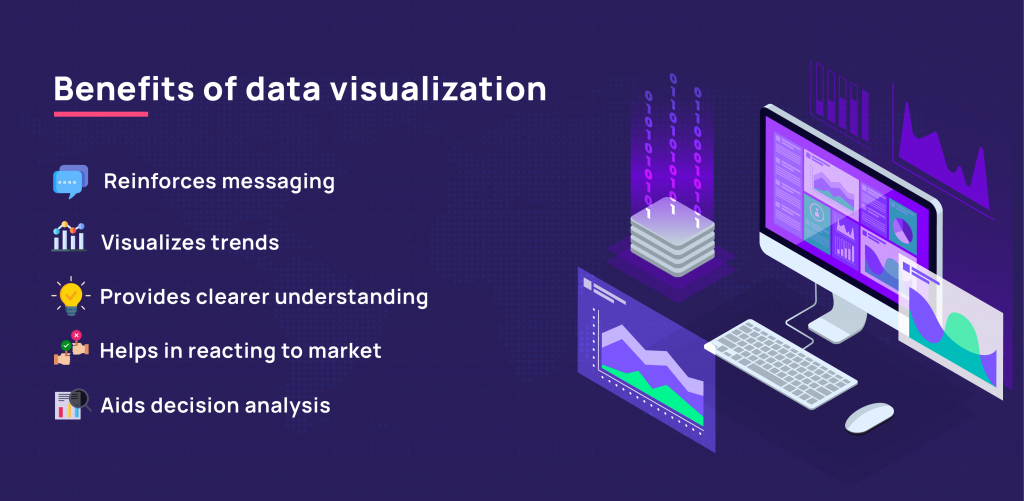
Conclusion
On top of sorts of visual cues, we have a tendency to see that generally there squares measure six sorts of teams. The top of the list isn’t thoroughgoing, however it’s widely used. within the future, and once new species square measure superimposed to the list, teams could increase. That’s thanks to the categories of views. we’ll continue with what frameworks we should always contemplate once adjusting the show sort.
we have explored the information read thoroughly, its price and advantages, moreover as fast tips for effective knowledge performance. To urge started with daring metal, please request a free 30-minute demo with our consultants to debate making dashboards and the other options you’d wish to learn additional regarding.


